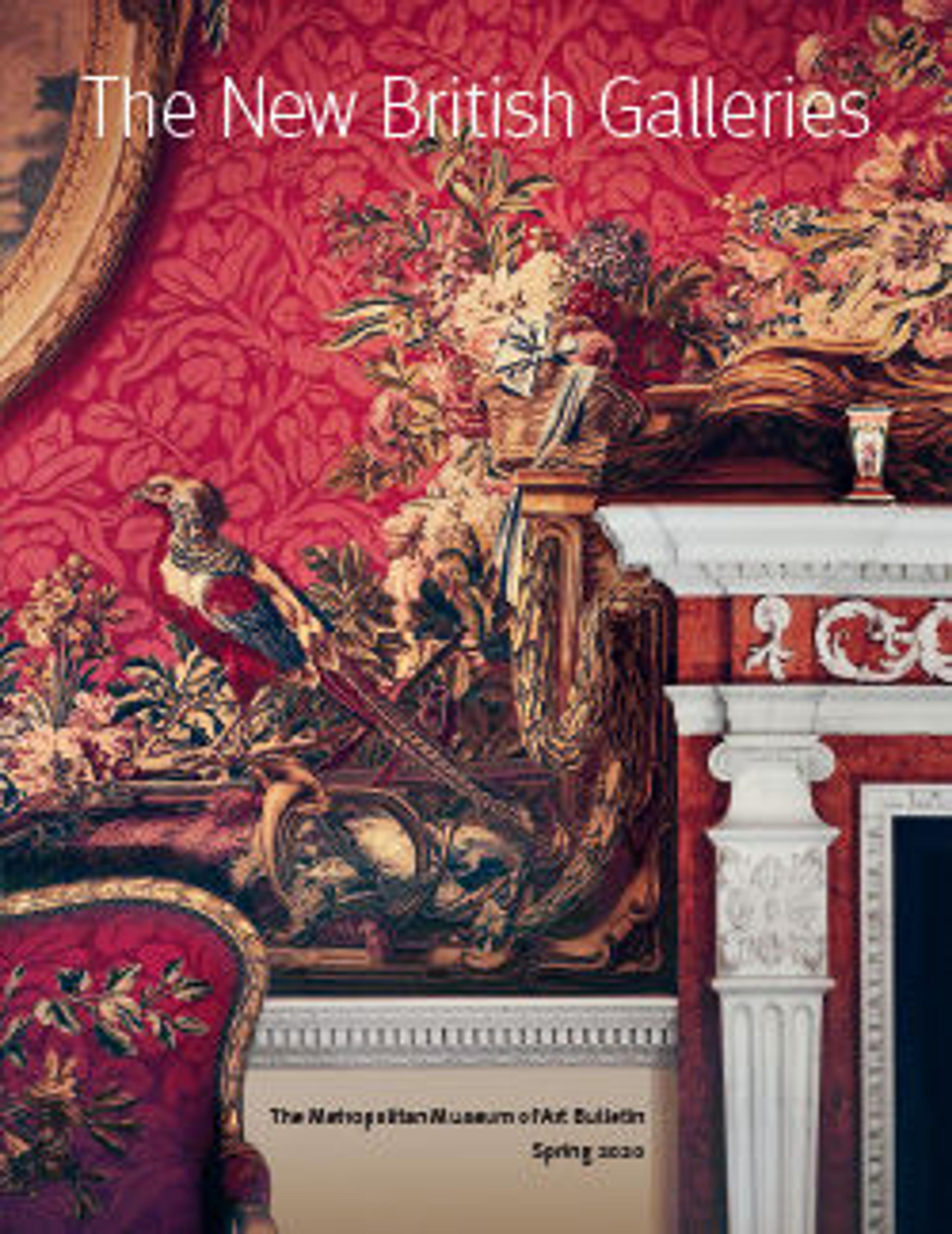Ewer
This austere and minimally-decorated silver ewer is remarkable for its clean outline and its energetic, sculptural profile. The dramatic sweep of the elongated spout is balanced by an ear-shaped handle fitted with a thumb piece allowing a grip that balances the weight of the filled vessel. The construction may be simple—it is formed of uncomplicated raised components— but it is composed with a sure sense of proportion and function.
The ewer would have been displayed with a matching basin on a sideboard or cupboard and brought to the table for the washing of hands during a meal. The form of this ewer, with its slightly everted rim, trumpet-shaped foot and flaring spout was employed at least until the 1670s. Only a few examples survive with their basins, which have a broad, plain rim and raised boss at center to accommodate the foot of the ewer when not in use.
The absence of decoration on early seventeenth century silver has traditionally been ascribed to a Puritan distaste for figural ornament, but more likely it is a reflection of an insecure society in the years around the Civil War. Patrons were well aware that their plate holdings were a form of ready money should they need it, and though the melt value of sterling was stable, the investment in the silversmith’s labor would be lost if a sacrifice was demanded. A vast quantity of plate belonging to the king and his court as well as the colleges and livery companies was destroyed during the conflict. Pre-Restoration English silver, therefore, is very rare.
This ewer was excavated in July 2013 by amateur treasure-hunters using a metal detector in a field adjacent to Kingston Russell in Dorset. The presumption has been that the Michel family, which occupied the manor house in the seventeenth century, buried the silver ewer to save it from destruction, though this scenario remains to be investigated.
The ewer would have been displayed with a matching basin on a sideboard or cupboard and brought to the table for the washing of hands during a meal. The form of this ewer, with its slightly everted rim, trumpet-shaped foot and flaring spout was employed at least until the 1670s. Only a few examples survive with their basins, which have a broad, plain rim and raised boss at center to accommodate the foot of the ewer when not in use.
The absence of decoration on early seventeenth century silver has traditionally been ascribed to a Puritan distaste for figural ornament, but more likely it is a reflection of an insecure society in the years around the Civil War. Patrons were well aware that their plate holdings were a form of ready money should they need it, and though the melt value of sterling was stable, the investment in the silversmith’s labor would be lost if a sacrifice was demanded. A vast quantity of plate belonging to the king and his court as well as the colleges and livery companies was destroyed during the conflict. Pre-Restoration English silver, therefore, is very rare.
This ewer was excavated in July 2013 by amateur treasure-hunters using a metal detector in a field adjacent to Kingston Russell in Dorset. The presumption has been that the Michel family, which occupied the manor house in the seventeenth century, buried the silver ewer to save it from destruction, though this scenario remains to be investigated.
Artwork Details
- Title:Ewer
- Maker:Probably Peter Bettesworth (British)
- Date:1635
- Culture:British, London
- Medium:Silver
- Dimensions:Overall (confirmed): 11 3/8 × 10 7/8 × 5 5/8 in., 35.64 oz. (28.9 × 27.6 × 14.3 cm, 1010.5g)
- Classification:Metalwork-Silver
- Credit Line:Purchase, Friends of European Sculpture and Decorative Arts Gifts and Larry and Ann Burns Gift, in honor of Austin B. Chinn, 2015
- Object Number:2015.502
- Curatorial Department: European Sculpture and Decorative Arts
More Artwork
Research Resources
The Met provides unparalleled resources for research and welcomes an international community of students and scholars. The Met's Open Access API is where creators and researchers can connect to the The Met collection. Open Access data and public domain images are available for unrestricted commercial and noncommercial use without permission or fee.
To request images under copyright and other restrictions, please use this Image Request form.
Feedback
We continue to research and examine historical and cultural context for objects in The Met collection. If you have comments or questions about this object record, please contact us using the form below. The Museum looks forward to receiving your comments.
